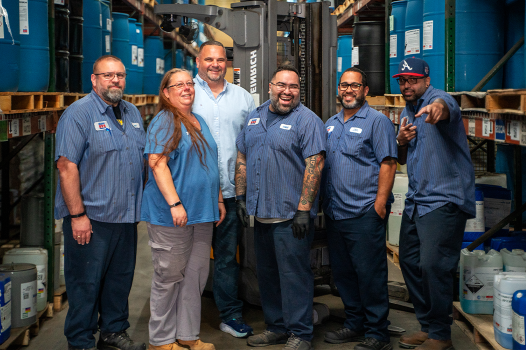Better results. Less chemistry.™
Ins & Outs of Pre-paint Performance Testing
Blog

The longevity and durability of any painted application can be difficult to determine given the abbreviated timeframe of development and manufacturing cycles. Yet, it is incumbent on manufacturers to produce coatings that exhibit resilience to time, wear, and environment factors. As such, industry has devised several methods and standards for the evaluation of painted coatings and their associated pretreatment processes, aiming to gauge their suspected performance over their operational lifespan. Numerous organizations, and even some manufacturers, have established testing methods and evaluation criteria to harmonize metrics and ratings throughout the supply chain; among which, ASTM serves as a common framework.
Within ASTM, several methods and rating schemes exist to objectively evaluate various aspects of paint performance, ranging from adhesion properties to resistance against corrosion. These methods frequently involve the use of humidity and salt spray chambers, calibrated to respective standards, in order to expedite the simulation of environmental conditions within a relatively short timeframe. Humidity testing (ASTM D2247) is a milder version of accelerated testing, where a continuous, stable water fog is applied to replicate humidity resistance. Alternatively, more aggressive assessments utilize salt-based solutions, either neutral or acidic, to replicate corrosive environments. Among these, neutral salt spray (ASTM B117) stands as the predominant approach for evaluating paint performance.
Across multiple standards, test specimens can be prepared using panels containing substrates, pretreatments, & paint applications representative of the actual part being evaluated. Once prepared, these panels can be evaluated via several methods, often integrating multiple standards to comprehensively measure specific performance aspects. Routine types of testing include:
- First Rust Evaluation: A straightforward approach involving the assessment of a painted part or panel within an accelerated environment until initial indications of rust manifest. This method can also be utilized to evaluate the tenacity of the paint itself.
- Creep from Scribe: This method consists of a set of panels scored with centerline scribe that are concurrently subjected to an accelerated chamber at periodic intervals. After exposure, panels are evaluated by scouring perpendicular to the scribe, with the average width of paint removed being quantified.
- Cross-Hatch Testing: This technique involves a series of parallel scribes intersecting another perpendicular set of scribes. These scribes can be assessed within an accelerated environment, or immediately tested by applying and removing tape over the intersectional area to evaluate potential paint removal.
Regardless of the chosen methods or standards, it is important to acknowledge that these tests function as relative indicators of performance and durability. Metrics and ratings often depend on customer specifications. Given the multitude of factors influencing performance – from surface geometry and pretreatment morphology to quality of paint applied – parameters can be tailored to the part and its intended application.
Contributed by Connor Callais




